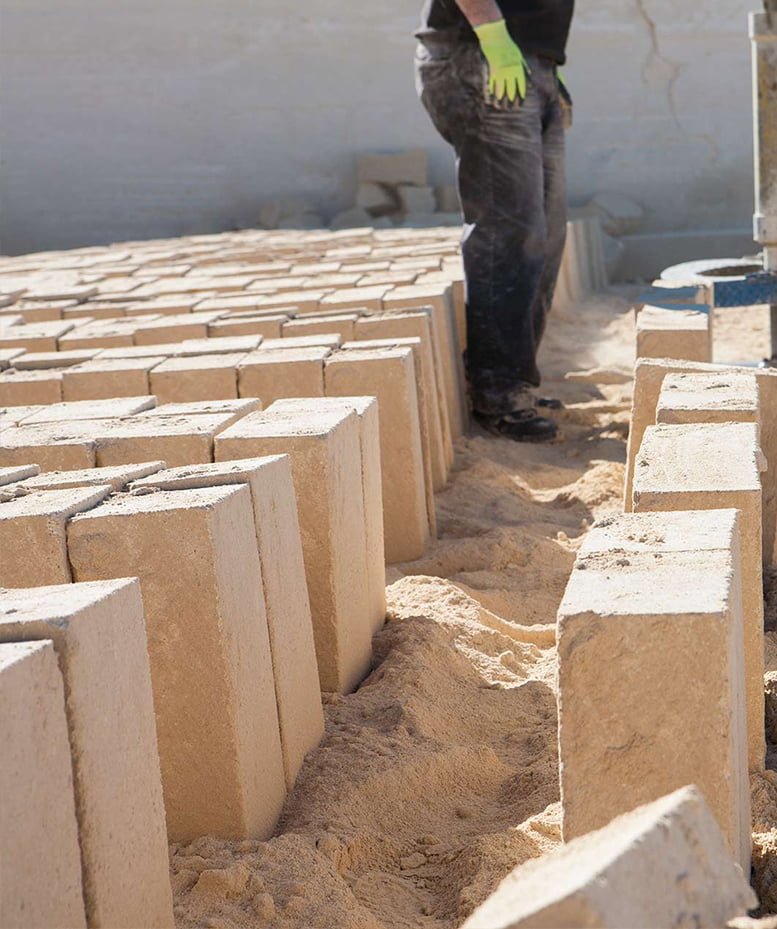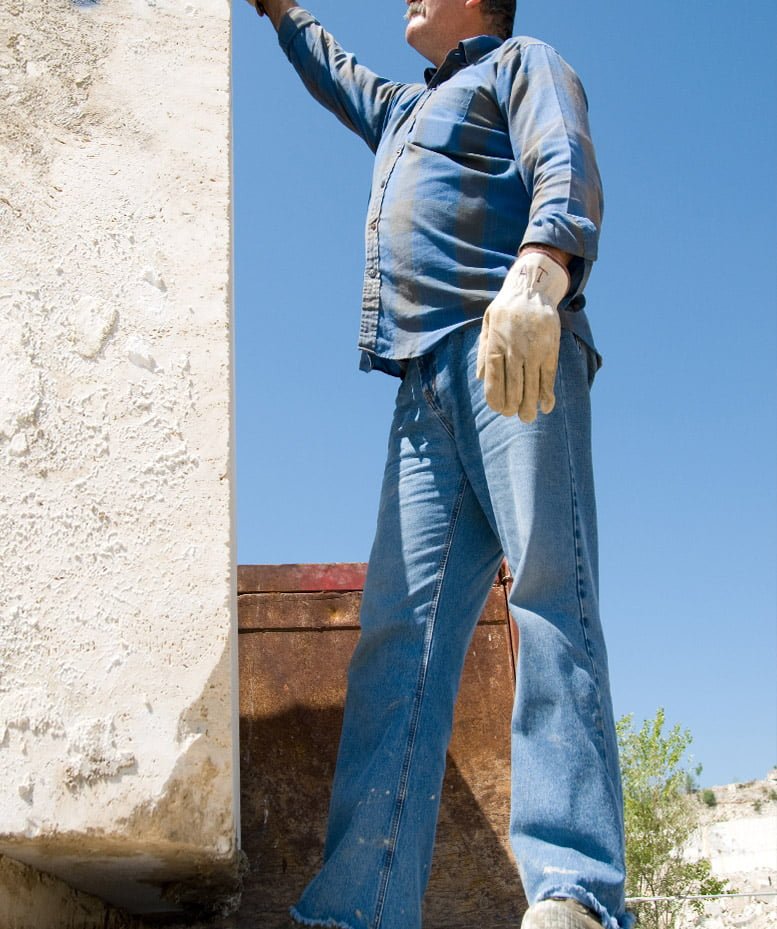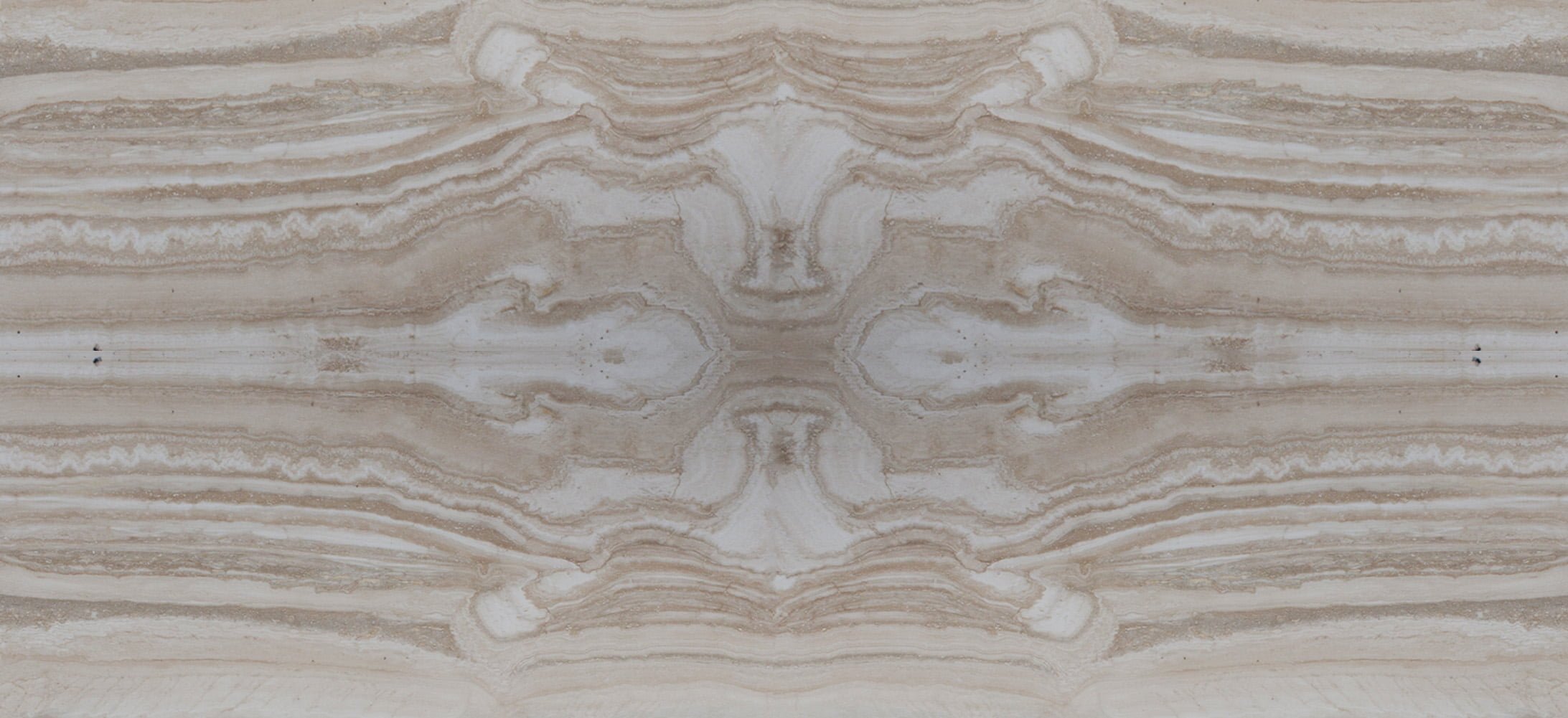Natural Stone Tiles
Natural Stone tiles bring genuine beauty and style to any living area. Natural stone is sturdy and durable. It is not slippery like artificial materials, making it a safe option for homeowners, builders and architects.
How are natural stone tiles produced?
Natural stone tiles are cut from large blocks. Big blocks are cut and sliced into different thickness slabs using a large industrial gang saw. Different finishes can be applied onto slabs to give them a smooth, rough or shiny finishes. They are further cut down into tiles. There are some slight variations within this process, depending on the tile and the type of stone quarrying process. Tufa stone, for example, is cut into tile-sized blocks. Roman travertine or marble instead are cut from big slabs.


Where can I install tiles?
Natural stone’s characteristics of resistance and aesthetic beauty, make this building material usable in different environments. The interiors welcome them specifically for the elegance and at the same time for the particular sensation of naturalness that the stone is able to give. The different patterns that can be created with natural stone are able to customize each environment according to customer requests, creating combinations with the thousands of architectural styles.

The compactness and hardness are characteristics of natural stone that make it suitable for external cladding, especially for paving, seats, tables, garden decorations. Natural stone can also be used for swimming pool areas.
Why should I choose natural stone tiles instead of ceramics or artificial marble?
Natural stone veneer is made from real stone quarried from the earth. The large pieces are then sliced into thin profiles to create veneers. On the one hand natural stone veneer features imperfections, textures and tonal variation that have formed over thousands of years. Manufactured cultured stone, on the other hand, is a man-made product designed to resemble natural stone. This product is typically made of concrete and aggregate materials that have been pressed into molds.
Appearance:
Advancements in technology mean that manufactured stone can offer a realistic aesthetic, especially from a distance. However, look more closely and the cultured stone doesn’t stand up against the authenticity of natural stone. You’ll often spot several identical stones in the cladding and may even discover some of the stones have a hand-painted finish. As natural stone is an exclusive quarried product, there are no two pieces the same. These characteristics are what make this product unique and of an unrivalled appearance.
Cost:
The difference in cost may be smaller than one can imagine. As man-made stones have advanced in appearance, the cost-saving benefit of high-quality manufactured products over natural stone has been virtually eliminated. The costs to transport both natural stone and manufactured cultured stone are relatively similar. The installation cost of manufactured stone can be slightly less due to the repetitive and easier method of installation. The maintenance cost of natural stone is generally less than the man-made product as it can easily be pressure washed clean.
Durability:
One of the main considerations when choosing between manufactured stone and natural stone is the durability of the product. Both products are considered to fare well in the short term, however, there are some differences between their performance in the long term. Manufactured stone can deteriorate over time, especially when exposed to natural elements such as rain, sunlight, dirt and wind. If color is a driving factor in choosing a cladding material, natural stone should be your first preference.
Visit our Atelier to find out about the immediate availability of natural stone tiles or contact us.
Where can I buy natural tiles?
The best way to be sure about the quality, origin and technical characteristics of natural stone is to buy from quarry owners.
Alternatively, you can rely on certified retailers, installers, marble contractors and distributors, present in your city or country, which will provide you with technical characteristics and certificates of origin (from the chamber of commerce or the quarry itself) of the material you are purchasing. If you want to touch and feel natural stone’s uniqueness the next step is to order samples!




Follow Us On Social Media: